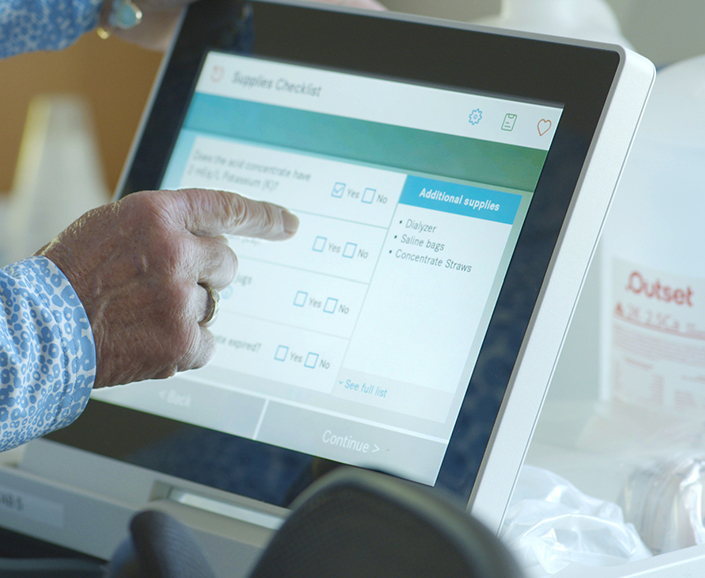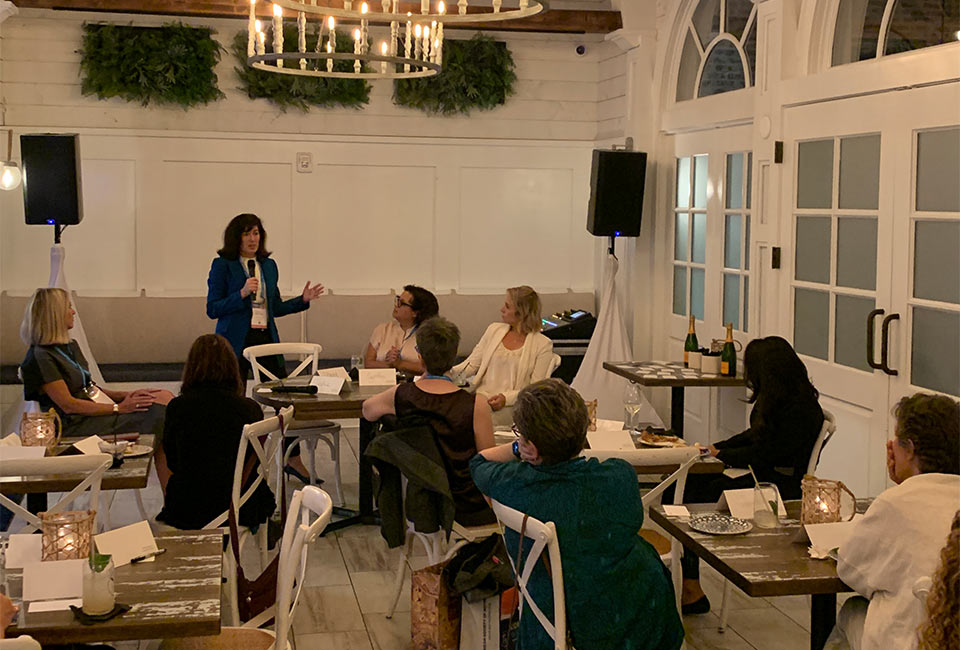Commentary: Critical Elements for a Bright Future in Renal Replacement Therapy
By: Outset Staff Dean Hu & Tonya Saffer

Summary
The dialysis space has hit a juncture where curiosity, ingenuity and perseverance – the driving forces behind the pioneering early days – are once again needed to solve the key issues facing the field today, and best serve patients and providers.
Let’s start with a simple, tragic fact. Kidney failure affects far too many people. For the vast majority of human history, this meant a steady, irreversible buildup of fluids and toxins leading to an inevitable death. This is no longer the case today. Thanks to the pioneering efforts of scientists over the past 150+ years, millions of people worldwide are able to continue living with regular dialysis, and others—though far too few—receive transplants.
The story of how we’ve been able to get here, and the inflection point that the kidney disease care paradigm finds itself in today, is a testament not only to the innate desire within us to heal and alleviate suffering, but to the critical elements of curiosity, ingenuity and perseverance that are once again needed today, to recalibrate in a patient-focused way.
In the Beginning: Curiosity, Ingenuity and Perseverance
The story of dialysis to treat end-stage renal disease (ESRD) has its roots in the Age of Enlightenment, when the laws of diffusion and osmosis were uncovered. Thomas Graham (1805-1869) used simple materials including glass jars, paper and parchment to discover how different materials pass through permeable membranes. John Jacob Abel (1859-1939) was credited with making the leap that these principles could be used to remove toxins from blood that accumulated due to kidney failure with his “vividiffusion” apparatus, consisting of a series of tubes immersed in fluid.
The 1940s marked the beginning of the innovative era in renal replacement. Willem Kolff (1911-2009), regarded as one of the most important physicians of the 20th century, successfully treated patients during World War II with a prototype dialyzer he developed using orange juice cans, used auto parts, and sausage casings. It took Dr. Kolff persevering through over a dozen failed attempts until a single life was saved, but renal replacement was finally born. While the product evolution that followed provided people with kidney failure a chance at life, the relative scarcity and high cost of early dialysis equipment limited the availability of dialysis as a viable option. It wasn’t until 1972 that amendments to the Social Security Act were passed by Congress and signed into law by President Nixon, affording nearly all Americans with ESRD, regardless of age, eligibility for coverage through Medicare.
Followed By a Descent into “One-Size-Fits-All” Dialysis
In the subsequent decades as dialysis technology became more widely used, a new “standard of care” evolved: in-center dialysis for chronic kidney disease. At the same time, however, the ESRD population began to grow exponentially, along with increasingly prevalent comorbidities such as diabetes and hypertension that silently damage the kidneys.
This gave rise to the “big business” hemodialysis model. Much like a factory line, this model involves getting patients in and out of the dialysis clinic as quickly as possible, in a primarily “one-size-fits-all” approach, in many cases using high-flow machines to minimize the time patients are in their chairs. However, consequences that often result if the blood is cleansed too quickly are large fluctuations in blood pressure, nausea, diarrhea and severe cramping. What’s more, treatment schedules are built around a clinic’s operating efficiency, to the detriment of both patient agency and quality of life, and medical outcomes. There is little room for customizing treatments based on patients’ needs, goals, values or preferences. The stark human toll of this life-saving evolution has been the marginalization and disempowerment of the very people who are reliant on dialysis for life.
Today: Bending the Arc
To achieve a brighter future – a fuller restoration for patients of not just kidney function, but wholeness and agency – we need to once again call upon the indominable spirit of all who are passionate about serving our ESRD population to the best of our ability, while also elevating the dialysis experience for patients and helping providers to overcome care delivery challenges.
Outset’s Tablo Hemodialysis system provides an opportunity to grant freedom and empowerment to dialysis patients as an alternative to a stagnant, profit-centered kidney disease care system that once was a beacon of life. Patients and their care partners can be trained quickly and easily to perform dialysis at home, healthcare providers can add dialysis with Tablo to their other in-house healthcare service lines without needing to build a large infrastructure. In addition, patients are able to take back control of their kidney health and live more independently, free from the restrictions, inconvenience and health implications of in-center dialysis.
REQUEST A DEMO
Get in touch with us! We’d love to show off Tablo and learn more about your dialysis program.
The important next steps that are needed for this bright new vision to become a reality are in motion as we speak. Critical elements needed include the kidney care community stepping up and embracing a new model of care, as well as Medicare policy on dialysis regulation and reimbursement shifting from a one-size-fits-all to a patient-centered approach.
“The successful widespread adoption of empowered self-dialysis at home or in a freshly imagined, patient-focused dialysis “clinic” that meets the patient where they are, could light the path to future innovations in renal replacement therapy.”
At Outset we have a saying that we embody in all that we do: Better Begins Now. But here’s the thing about “Now”- it is always “Now.” That means the better that begins today has to be the bridge to the better that will begin tomorrow. The successful widespread adoption of empowered self-dialysis at home or in a freshly imagined, patient-focused dialysis “clinic” that meets the patient where they are, could light the path to future innovations in renal replacement therapy. The possibilities that are already happening today range from new biomaterials that offer the promise of improved vascular access, filtration and lifestyle impact, to advances in biosensors, artificial intelligence and machine learning that empower patients and healthcare providers, continually improve technology, create service efficiencies, and uncover new opportunities.
Dr. Kolff once stated: “If we are going to keep patients alive by artificial means, we then incur the responsibility to see that it is a good life, and an enjoyable one.” It is worth a moment to pause, reflect and appreciate how successful we have been in doing the first part – keeping patients alive – for so many people living with kidney failure. But at the same time, an equally important introspection must take place regarding how far we have missed the mark on the second element – providing a good life – for so many patients. Reversing this course will not be easy, but continuing down the stagnant road we have been on will be even more difficult and costly in the end. All of us in the kidney disease community are not strangers to tackling complex problems. We’ve figured out how to replace the function of one of the most complex organs in the human body – and deliver it on a massive scale. Now we are tasked with making it more human.

